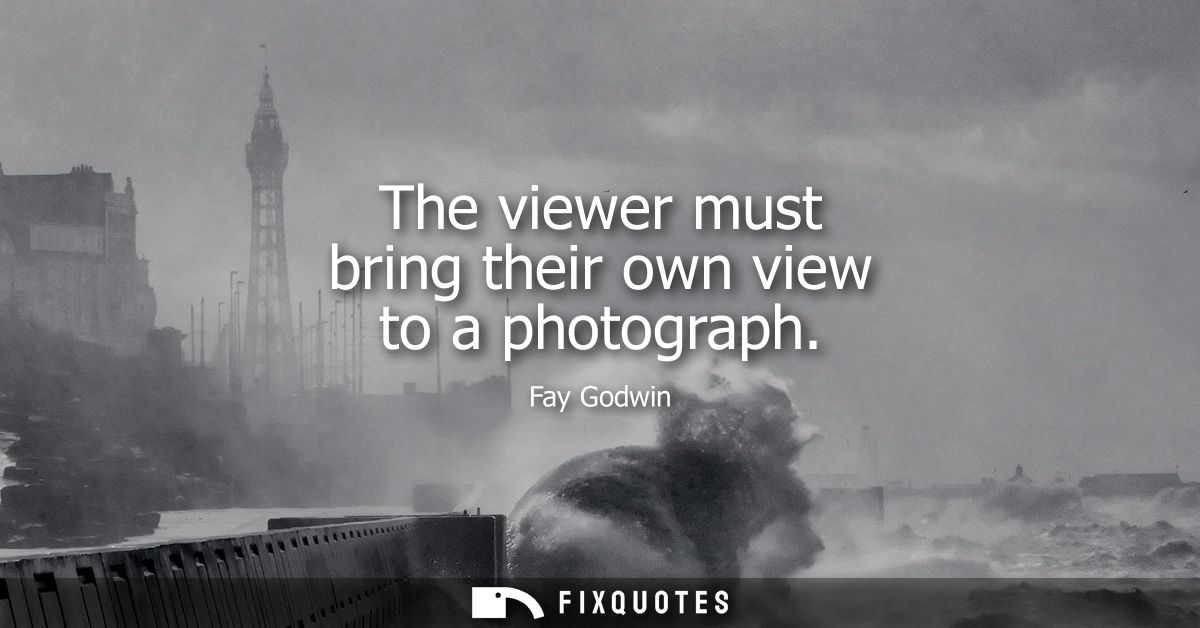"The viewer must bring their own view to a photograph"
About this Quote
Photographs do not carry meaning as sealed packages; they are invitations to a conversation. A camera can arrest light and form, but it cannot fix the emotional or cultural resonance that an image will have. Each viewer steps toward a photograph carrying memory, desire, bias, knowledge, and mood, and those elements shape what is noticed, ignored, praised, or resisted. The same frame can be elegy or celebration, protest or pastoral, depending on the eyes that meet it.
This perspective does not deny the photographer’s intention; it reframes intention as a starting point rather than a verdict. Composition, light, subject, and sequencing propose possibilities, set rhythms, and open doors. Yet photographs often thrive on ambiguity. Shadows, omissions, and edges ask for completion. Meaning becomes a collaboration, co-authored in the space between maker and witness.
Consider landscape work, where weather, distance, and human traces intersect. A path across the moor may suggest freedom to some and enclosure to others. A fence can read as stewardship or control. Environmental knowledge inflects the reading: a scar of quarrying may appear either as human industry or a wound. Godwin’s own landscapes often carry an undercurrent of environmental critique; the depth of that undercurrent depends on what the viewer knows and cares about.
There is also an ethical dimension. Demanding that images dictate a single reading can flatten complexity and silence local experience. Allowing viewers to bring their view recognizes plural truths and the dignity of situated knowledge. It encourages patience, interrogation, and humility.
In the age of captions, algorithms, and instant reactions, this stance resists reduction. It asks viewers to slow down, to look again, to test first impressions against detail. Photographs become less like statements and more like questions. The richest images are not puzzles to be solved but spaces to inhabit, where personal history and shared world meet. Only then does the photograph fully live: at the moment a viewer brings themselves to it.
About the Author

